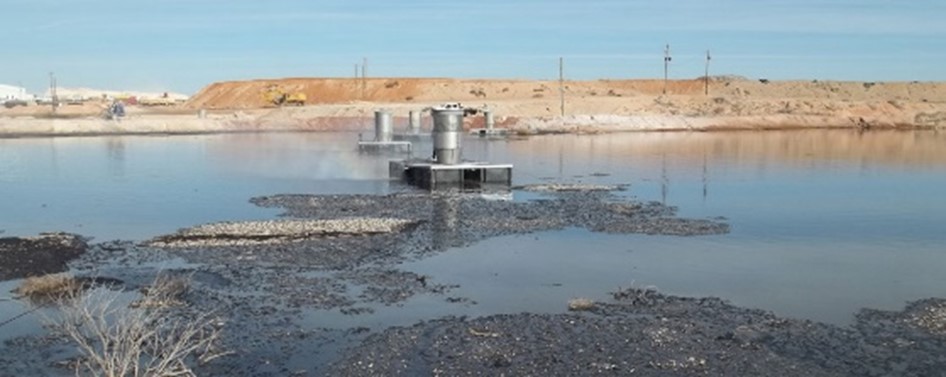Geomembrane Selection and Use in Evaporation Ponds
Part 1: Evaporation Pond Operation and Containment Requirements
Meriwether Lewis, May 30, 1805, Chouteau County, Montana
Captain Lewis was not known for his grammar and spelling, but as an Easterner, he was amazed at the evaporation rates in the arid western US. Today, all over the world, geomembranes are used to line evaporation ponds, providing an economical and easily operated process for removing or separating water. This post will look at the theory of evaporation ponds, the industries where the process is in use, and the function, selection, and design of geomembrane systems for use in evaporation ponds.
The area where the 1805 post was created receives about 15 inches of rainfall per year, while the average evaporation is about 45” (Great Falls and Fort Peck Dam, respectively). There are multiple methods of quantifying evaporation rates, but this amount seems to be the standard for that area. Phoenix, for comparison, has an annual rainfall of about 8” and evaporation of about 74”. Water balance differentials of this type are essential for an engineered evaporation process, coupled with low humidity and open land.
Typically, on a yearly basis east of the Mississippi River rainfall will exceed evaporation. When I was consulting, we did some preliminary site work at an industrial facility in Eastern Tennessee. They generated acidic wastewater that was batch dumped into two small unlined impoundments. There was no discharge from the impoundments and the facility boasted that there was no discharge because of evaporation. A quick check of the pH in the creek downgradient initiated a long remediation process.
 Evaporation pond. Source: RWI Enhanced Evaporation
Evaporation pond. Source: RWI Enhanced Evaporation
What are the applications for evaporation ponds? Three of the major applications are as follows.
1. Desalination for the product of salt. Simply placing seawater in lined impoundments allows the water to evaporate, leaving behind only the salt.
2. Oil & Gas. Many operations produce oily and/or high dissolved solids water. Evaporation ponds hold these liquids to minimize the volume of the oily water or separate the water from the solids. Pretreatment is needed to remove oil for reduction in surface area for evaporation.
3. Mining. Some mining operations use large volumes of water and are in climatic areas more favorable to evaporation processes.
While these major categories are the most frequent users of evaporation processes, there are others, including industrial and even municipal wastewater applications. Both are process and site-specific. The increased emphasis on water reuse and greywater use has raised awareness for water as an asset rather than a resource for disposal (or evaporated). Still, evaporation is valued as a wastewater management tool in certain situations.
The 2nd part of this series will cover the processes which occur in evaporation ponds and the corresponding geomembrane properties needed.
View Part 2 and Part 3 of this series.
For more information on the XR Geomembranes for use in evaporation pond applications, click here.



